25 things they didn't teach you about American presidents at school
Only human
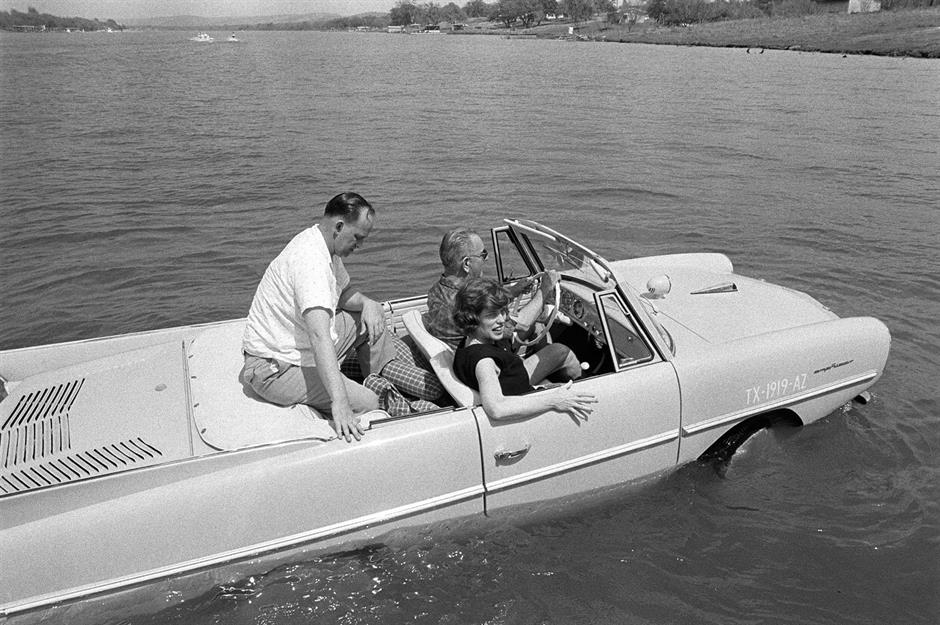
The office of President of the United States is a noble calling, and most who have held it have risen to its demands. But they are only human, with their own quirks and foibles. Some of them even have a few skeletons in their closets.
Scroll on through the gallery to discover the intriguing, quirky and sometimes shocking things they don't teach you about those who have held the highest office in the US...
25. POTUS 7 was a stone-cold killer
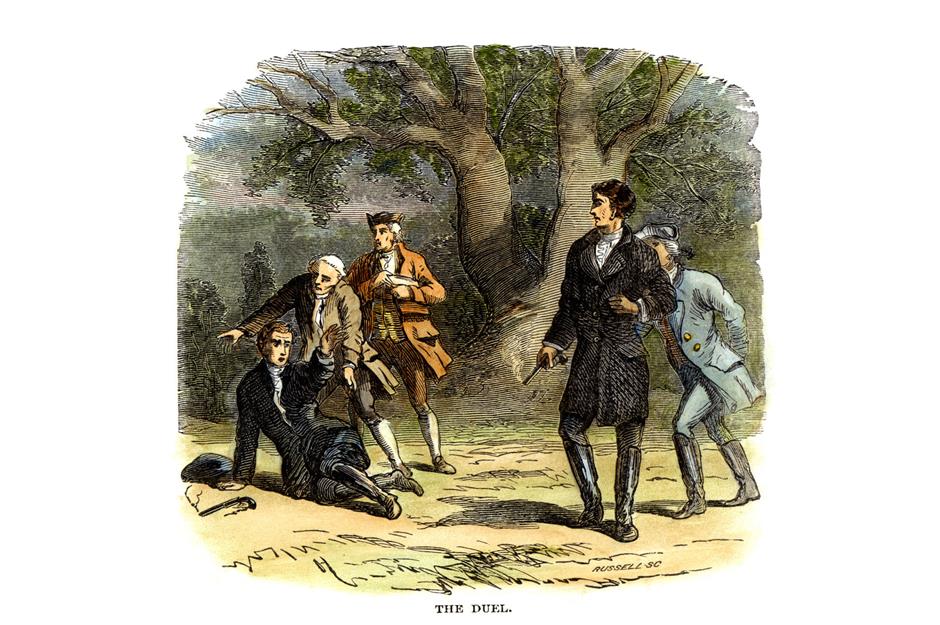
Notoriously bad-tempered and described as having “shoot” in his eyes, the Union’s 7th President, Andrew Jackson, was also its most bad-tempered. As a teenage prisoner during the Revolutionary War, he grabbed the blade of a British officer with his bare hands. And during his presidency, he even fought off a would-be assassin with his walking cane.
Most famously, he also killed a man. On 30 May 1806, Jackson challenged attorney Charles Dickinson to a duel and despite taking a shot to the chest, the future president stood firm and fatally wounded Dickinson with a return shot to the stomach.
24. Ulysses S Grant had a need for speed
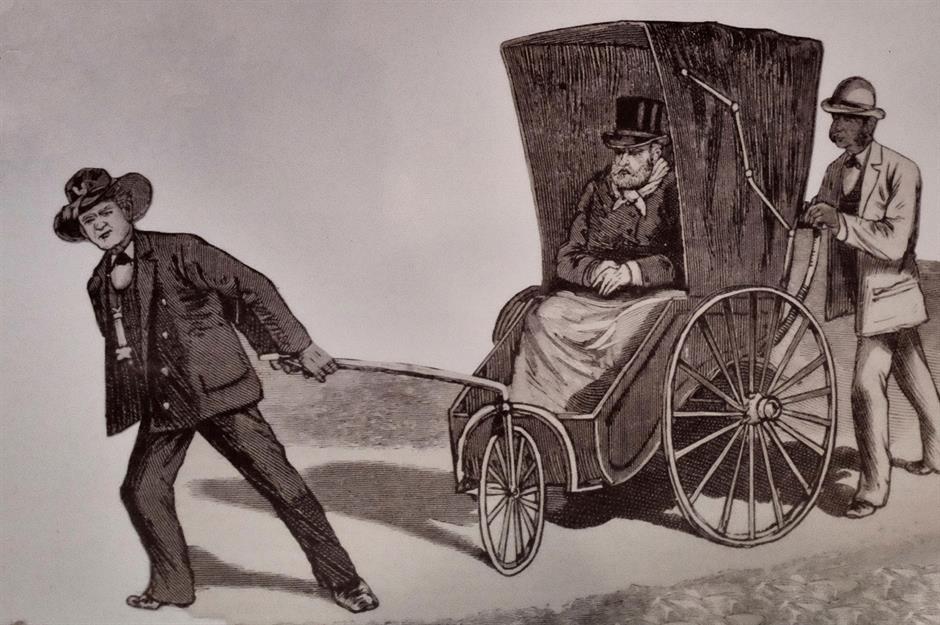
During both his time as a general and as president, Ulysses S Grant liked nothing better than to race his friends along the grand boulevards of the capital at high speed in horse and carriages. In 1872 the local constabulary had had enough and, after issuing three warnings, finally arrested the president for speeding as he tore around the corner of 13th and M streets.
Despite being the only president arrested during his time in office, Grant never lost his need for speed – as seen in this sleek wheelchair, built especially for the last months of his life.
23. FDR was an avid stamp collector
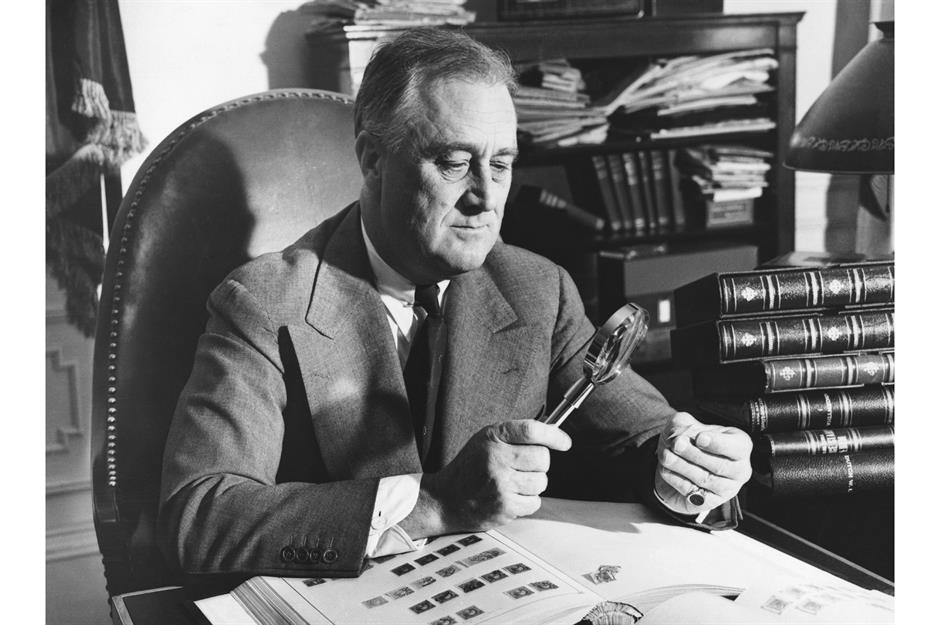
Arguably the most famous stamp collector of all time, President Franklin Roosevelt said he 'owed his life' to the hobby. As a polio-stricken youngster, he explored the world through stamps, and as a war-time president, he would relax by browsing through his collection (pictured).
What many people don’t know is that Roosevelt didn’t just collect stamps, he helped design them too. He worked beside Postmaster General James A. Farley, brainstorming stamp designs, colours and themes, and even sketched out a few designs himself.
22. George Washington was paid double what presidents are today
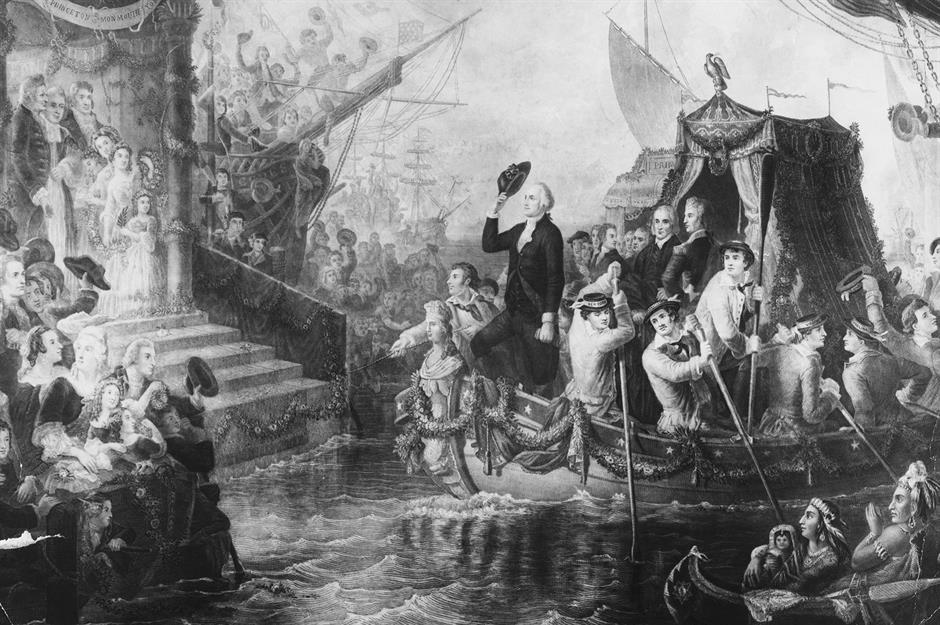
Here we see George Washington arriving for his inauguration and an annual paycheck of $25,000. It was a huge amount of money back in 1789, worth roughly $900,000 in today’s money, and more than double the $400,000 a year presidents earn today.
It should be pointed out, however, that unlike modern presidents, George Washington had to cover rent for his house, staff, food, travel expenses and the cost of hosting dignitaries. Most presidents in the early days of the republic actually left office in debt.
Love this? Follow our Facebook page to learn about more American history
21. Lyndon B Johnson loved driving on water
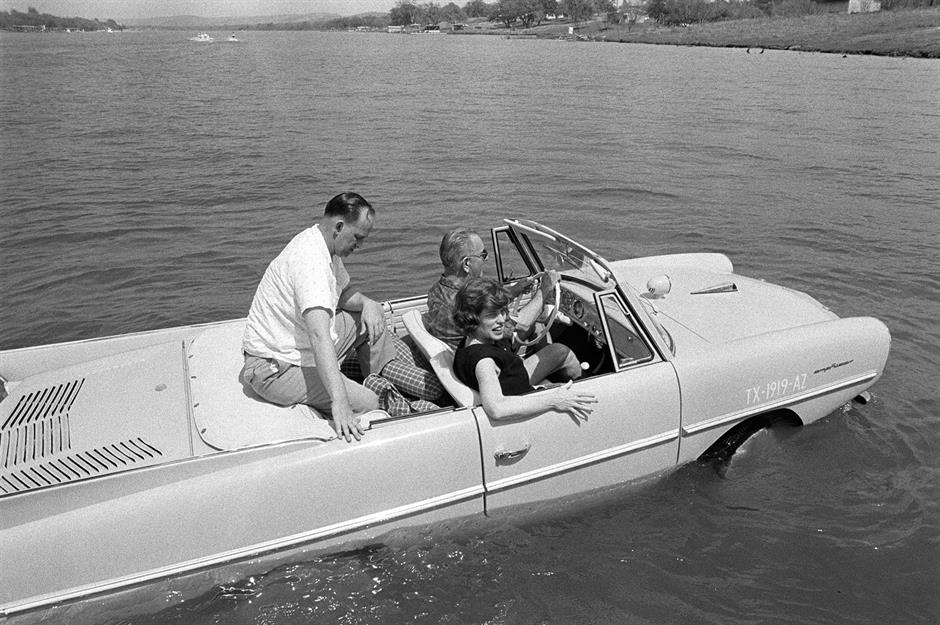
President Lyndon B. Johnson was a notorious practical joker. One of his favourite pranks was taking unsuspecting guests for a drive around his ranch in Texas in his Lagoon Blue Amphicar (pictured).
The Amphicar was a German built amphibious passenger vehicle that could ‘drive’ on water but the guests didn’t know that. Johnson would drive down a steep incline towards a lake on the property and exclaim that the brakes had failed. Instead of crashing and sinking, the car floated and puttered around – an altogether unexpected way of going all the way with LBJ.
20. George Washington insisted Martha burn all his letters
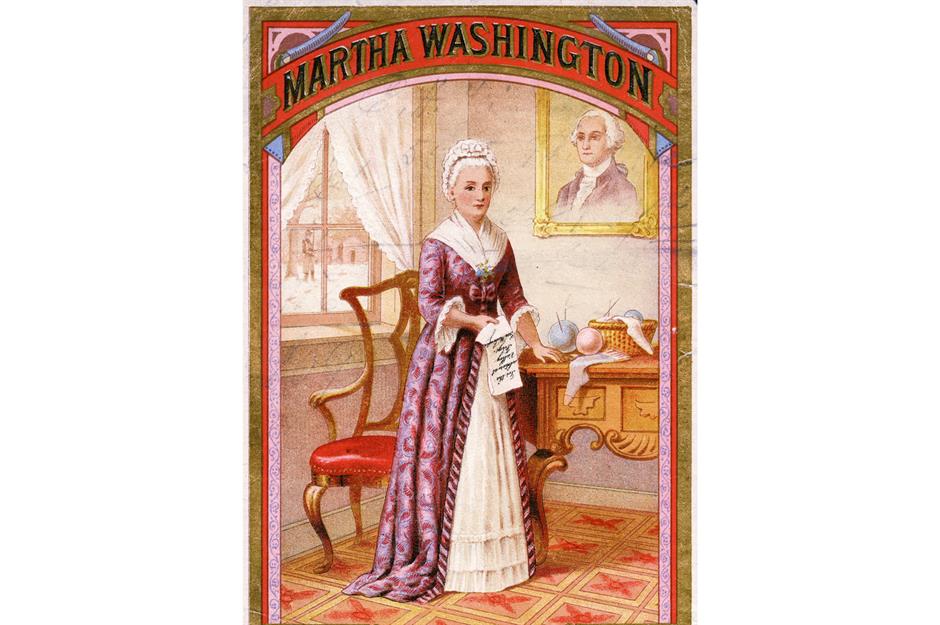
George Washington was very aware of his place in history and took great care to ensure that all his correspondence as both Commander-in-Chief as well as President of the United States was preserved for posterity. There were some letters he didn’t want to see the light of the day though – his private correspondence with his wife, Martha.
He insisted she burn them upon his death, and historians have speculated why. The discovery of a few stuck behind a desk hints at the reason. They were soppily signed, 'Your entire George Washington.'
19. FDR served four terms in office
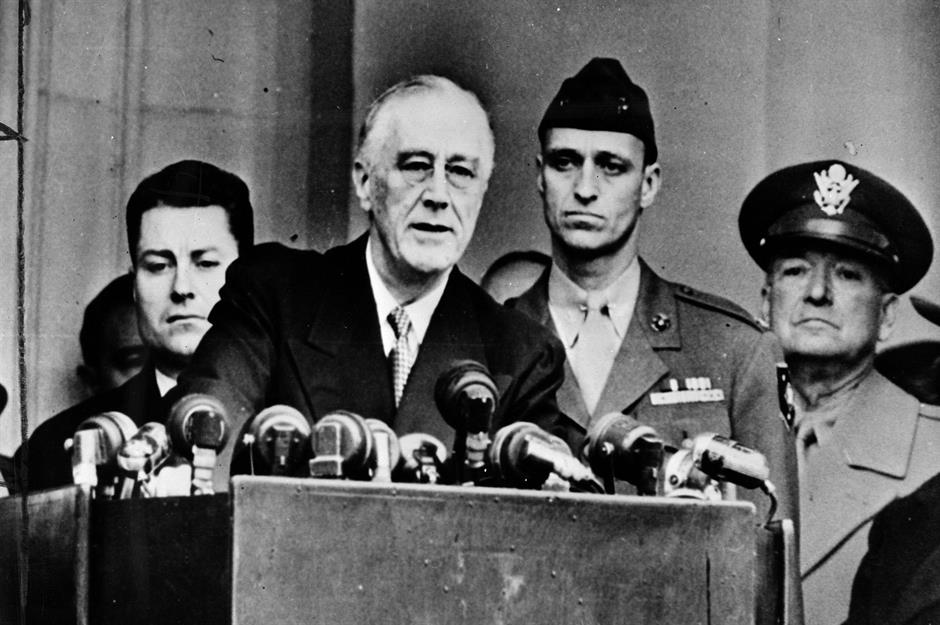
While President George Washington famously refused to seek a third term in office, claiming it was a necessary defence against monarchy, there were no formal laws written about presidential term limits. So, when faced by the challenges of World War II, President Franklin D. Roosevelt ran for a third and fourth term.
His fourth term (pictured) only lasted a few months before he died on 12 April 1945. The 22nd Amendment, limiting the number of presidential terms, was passed in 1947 and ratified in 1951. No president has served more than two terms since.
18. Teddy bears are named after Theodore Roosevelt
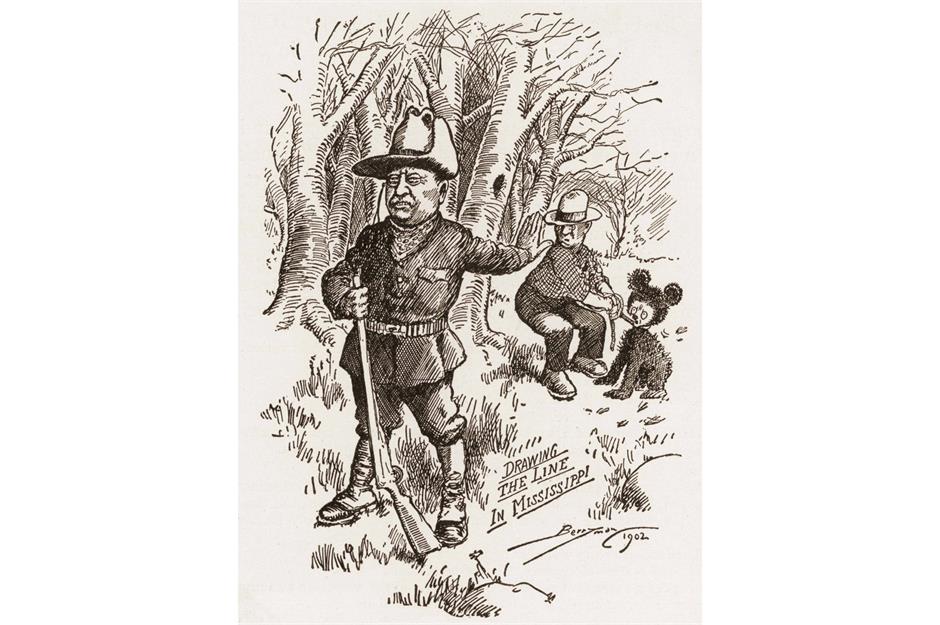
This Washington Post cartoon satirising President Theodore ‘Teddy’ Roosevelt’s refusal to shoot a bear tethered to a tree on a hunt near Onward, Mississippi, in 1902 unwittingly kickstarted a soft toy industry that is still flourishing today.
A Brooklyn candy shop owner, Morris Michtom, saw the cartoon and decided to create stuffed toy bears in honour of the president who refused to shoot a bear. After seeking Roosevelt's permission to call it a 'Teddy Bear,' he mass-produced the toys, and the rest, as they say, is history.
17. Whiskey rebels received the first presidential pardon
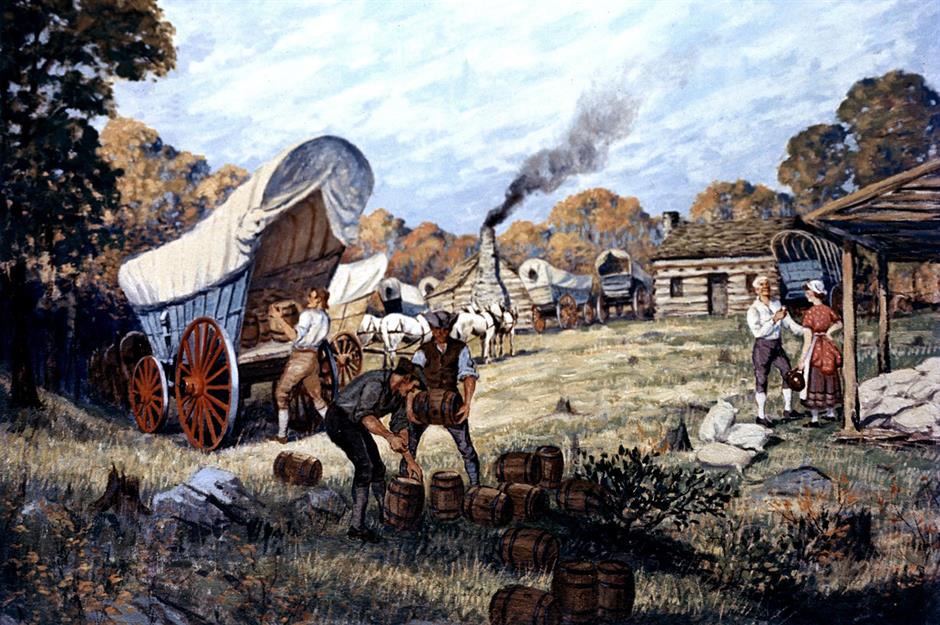
The ink was barely dry on the Constitution when George Washington issued the first presidential pardon on 2 November 1795. He granted amnesty to two men who had taken part in Pennsylvania’s Whiskey Rebellion, a popular uprising against taxes imposed on farmer distillers there.
John Mitchell and Philip Weigel had been arrested and sentenced to hang. Realising that such an outcome would only inflame further civil unrest, Washington granted them clemency.
16. The Founding Fathers called each other puppies
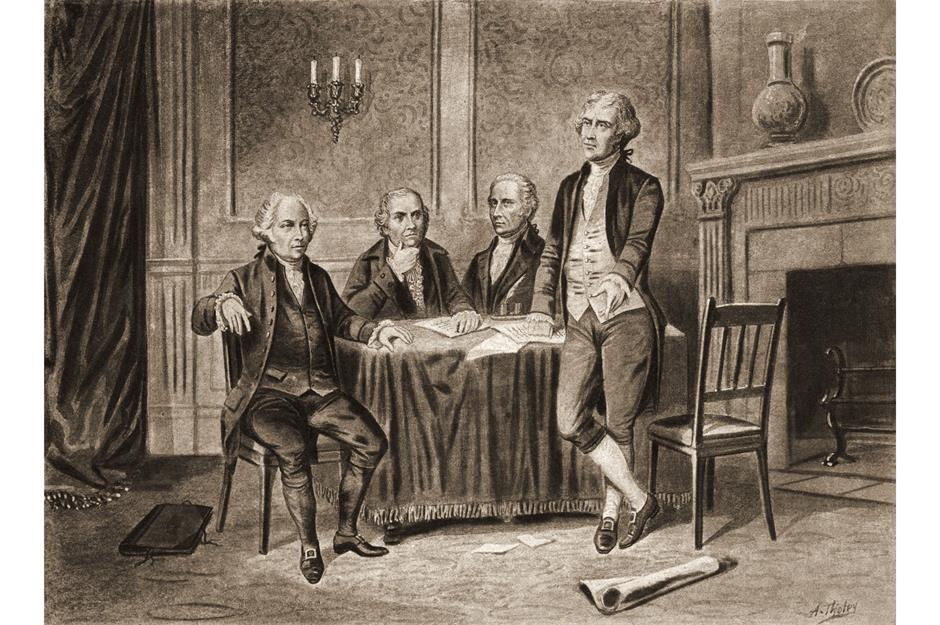
There was no love lost between Founding Fathers John Adams and Alexander Hamilton. Hamilton never got over Adams becoming the second ever president. Adams never got over Hamilton conspiring to stop it from ever happening.
Adams often referred to Hamilton as that 'Bastard Brat of a Scotch Pedlar.’ But that paled into insignificance when he referenced Hamilton’s ‘puppyhood’ in a letter to his wife Abigail. Calling someone a puppy was the ultimate insult to masculinity in the 1790s and would have led to a duel if the letter had ever become public.
15. The first State of the Union was also the shortest

The Constitution of the United States requires that the President gives Congress a State of the Union message on the issues facing the country and ideas on solving them.
George Washington gave the first State of the Union address at the Federal Hall in New York City on 8 January 1790. He must have felt he had things pretty much under control because it only ran to 833 words. It remains the shortest State of the Union ever given.
14. A speech saved Teddy Roosevelt’s life

Here we see President Theodore Roosevelt's secretary Elbert Martin holding up the pages of the speech that quite literally saved the president’s life. Note the holes pieced by the would-be assassin's bullet.
John Schrank had experienced visions telling him to stop Theodore Roosevelt from winning the 1912 presidential election and, on 14 October that same year, shot Roosevelt as he was leaving Milwaukee’s Gilpatrick Hotel. Luckily, Roosevelt had a speech he was about to give in his breast pocket. It was a long speech and hence the folded paper was thick enough to stop the bullet.
13. The S in Harry S. Truman remains a mystery
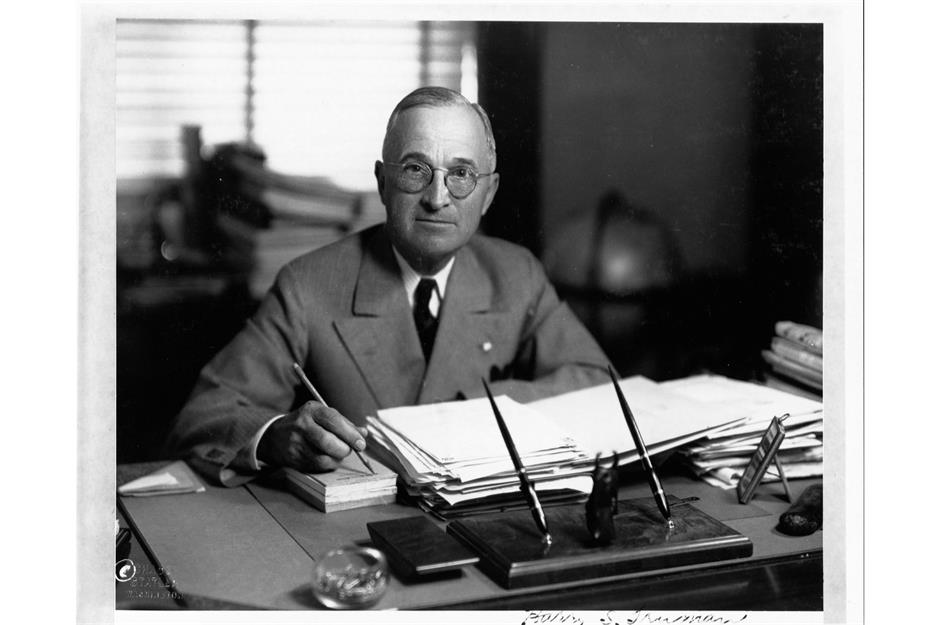
The 'S' in Harry S. Truman’s name has caused consternation for copy editors since the moment he ascended to the presidency following the death of Franklin D. Roosevelt in 1945. If it represents a name, it should be followed by a period. Truman claimed it didn’t but insisted on signing with a period anyway.
In later years he admitted it was a nod to both his grandfathers, Anderson Shipp Truman and Solomon Young, but only after conspiracy theorists claimed it was for Sergei, an unfortunate choice of name with the Cold War looming.
12. Roosevelt spent most of his presidency in a wheelchair
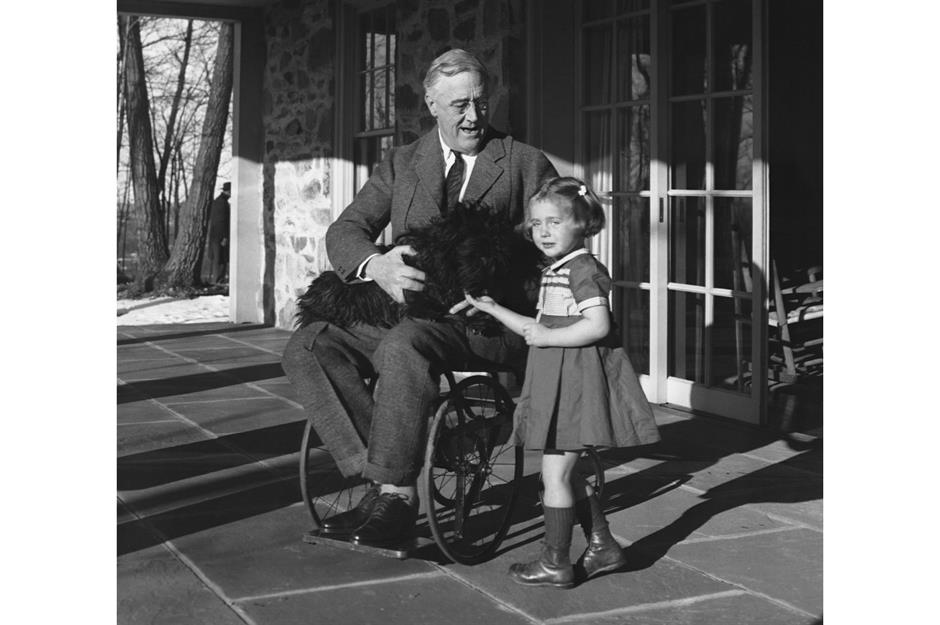
Not only is Franklin D. Roosevelt America’s longest serving president, he is also the only one to serve suffering from a severe disease. FDR, you see, had contracted infantile paralysis, better known as polio, in 1921 while holidaying in Canada at the age of 39.
Roosevelt worked hard to live with the disease, following a strict exercise regime and visiting therapeutic spas like Warm Springs in Georgia. Very few Americans knew just how dependent he was upon a wheelchair, at a time when people thought that if you were physically disabled, you were mentally impaired as well.
11. The tallest – and the shortest – presidents
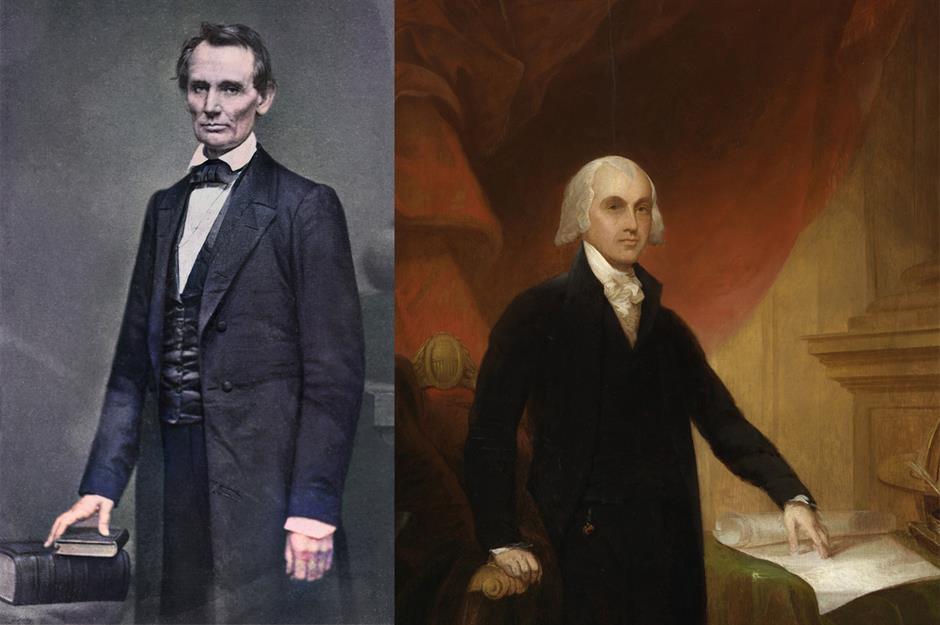
Here’s one for your next pub trivia quiz: Abraham Lincoln is the tallest president to date. He towered at 6ft 4in (193cm) should your quizmaster want specifics and is one of 19 presidents over 6ft tall, including Donald Trump who comes in third at 6ft 3in (191cm).
The shortest president so far is James Madison, seen here on the right. He didn’t trouble the measuring tape beyond 5ft 4in (163cm) and was a good foot shorter than Lincoln.
10. George Washington inoculated the entire continental army against smallpox

In the early days of the Revolutionary War, soldiers were more likely to die from disease than the weapon of an enemy combatant. Indeed 90% of all deaths were attributed to disease, with smallpox the deadliest.
Volunteers were reluctant to enlist because of it, so George Washington directly went against a proclamation prohibiting vaccinations and ordered a mass smallpox inoculation of his soldiers on 5 February 1777, using the crude medical instruments pictured above.
9. John Quincy Adams could speak five languages
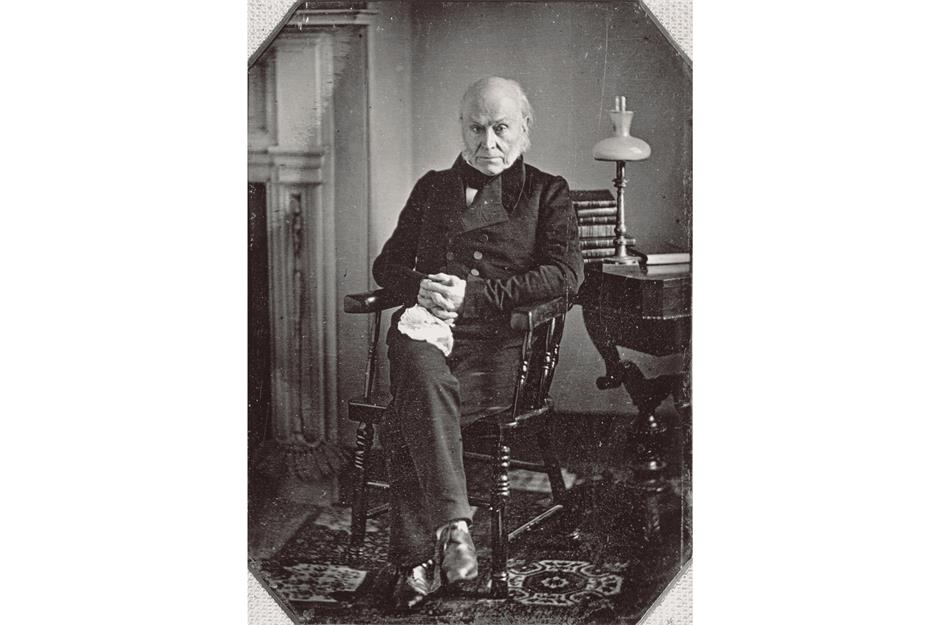
John Quincy Adams is widely regarded as perhaps the most brilliant and well-qualified person to ever occupy the White House. After accompanying his father to Europe, he could speak French, Dutch, German, Italian and French as well as Greek and Latin.
A deeply religious man, he would read bible texts in English, German and French each day as well.
8. Eleanor Roosevelt held female only press conferences

On 6 March 1933, just two days after her husband, Franklin D. Roosevelt, was inaugurated as president, First Lady Eleanor Roosevelt started a tradition that she continued throughout his presidency – White House press conferences that only female reporters could attend (pictured).
The press conferences covered subjects of special interest and value to the women of America and saved the jobs of female reporters who would have otherwise lost their jobs. The First Lady held 348 such conferences, each providing invaluable publicity for her as well.
7. William Henry Harrison was the first president to die in office

William Henry Harrison was America’s ninth president and arguably the most noteworthy. He was the first president to die in office and also served the shortest term – a measly 32 days. He was also the last president to have been born under British rule and the first to travel to Washington DC by train for his inauguration.
Here we see him on his deathbed, where he passed away on 4 April 1841. He’d caught a cold a few weeks earlier and it developed into a deadly case of pneumonia.
6. Grover Cleveland was the first president to have two numbers

Each president is recognised by a number, effectively their place in the sequence of great men (so far) who have served as Commander-in-Chief. George Washington was POTUS 1, Biden POTUS 46.
Sometimes that sequence is broken and a president gets two numbers. The first was Grover Cleveland (pictured) who served as POTUS 22 and 24, from 1885 to 1889 and again from 1893 to 1897. The current president, Donald Trump, is the only other to have served two discontinuous terms, as POTUS 45 and 47.
5. George Washington may well have told a lie
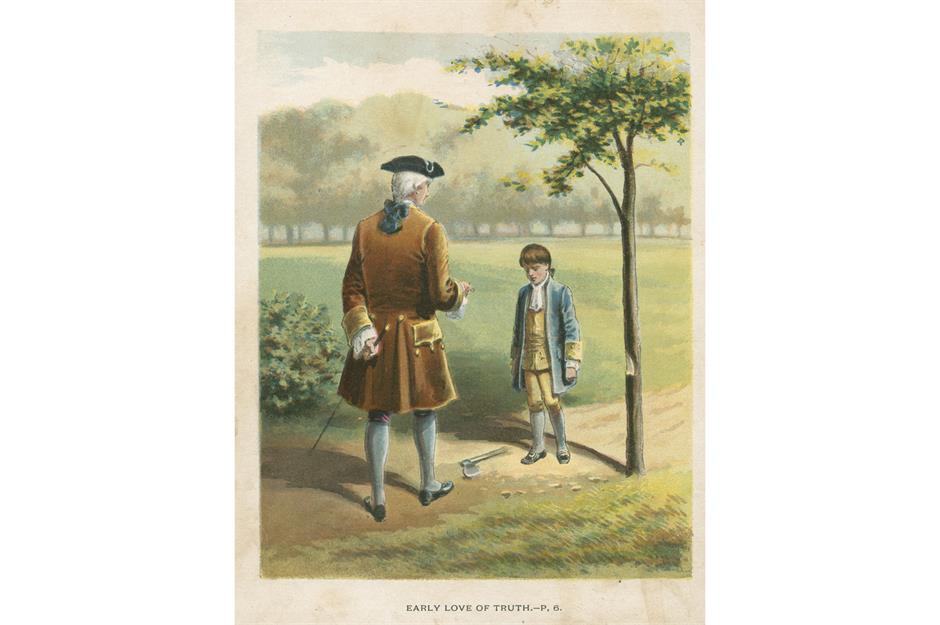
Sadly, the famous story of a young George Washington tearfully confessing to cutting down his father’s cherry tree with the words “I cannot tell a lie” must be considered as fiction rather than fact.
The story appeared in an unauthorised biography written by Parson Mason Locke Weems, an unbending moralist who hoped his portrayal of the president in The Life and Memorable Actions of George Washington would act as a role model for the fledgling country’s citizens. Tellingly, the cherry tree incident wasn’t added until the fifth edition.
4. Not every president has lived in the White House
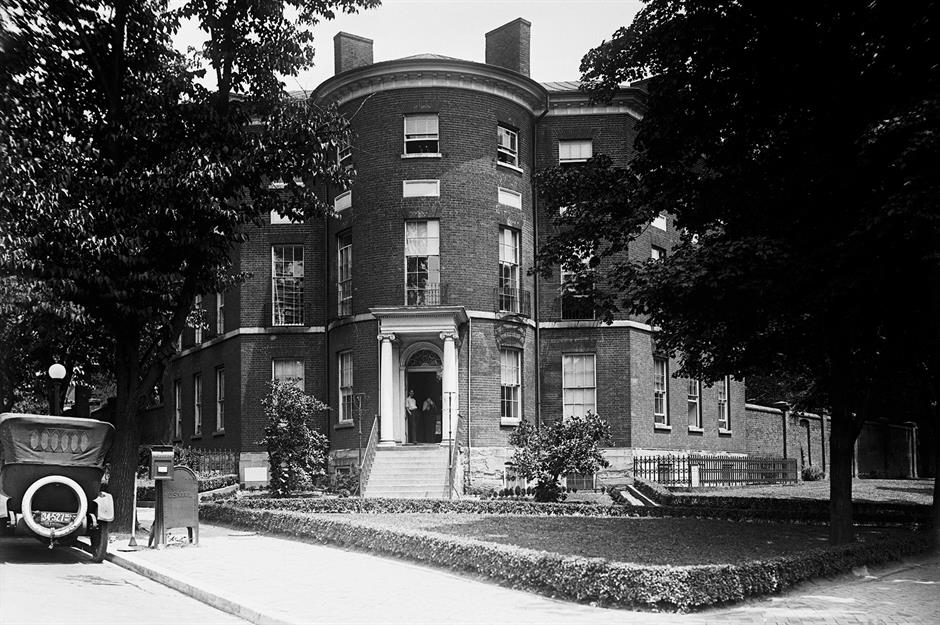
The White House has always been the official residence of the President of the United States. George Washington selected the site in 1791 but never became its first resident. That was John Adams, the country’s second president, who moved into the still unfinished building on 1 November 1800.
Only two presidents have lived elsewhere in the decades since. James Madison decamped to Octagon House (pictured) after the British burned the White House down in the War of 1812. And Harry Truman stayed in nearby Blair House in 1948, when the White House underwent massive renovations.
3. Edith Wilson was the first female president

Not officially of course. But after POTUS 28, Woodrow Wilson, suffered a stroke in October 1919, it was his beloved Edith that many believe was effectively running the country. He was left bedridden and partially paralysed, and she effectively became his proxy.
As the only conduit to the President, Edith wielded a lot of power. She was instrumental in the removal of Secretary of State Robert Lansing after he conducted a series of Cabinet meetings without the President.
2. Andrew Johnson was the first president to be impeached

Vice President Andrew Johnson assumed the office of president after Abraham Lincoln was assassinated on 15 April 1865. He was a Union man but his roots were in the south. “This is a country for white men," he once declared and spent much of his presidency clashing with congress over the reconstruction of the South.
Johnson also vetoed legislation protecting the rights of those who had been freed from slavery and on 24 February 1868 the House of Representatives voted to impeach him. When his trial concluded on 16 May 1868, he was acquitted by one senate vote.
1. Abraham Lincoln was a licensed bartender

Before he became president, Abraham Lincoln briefly worked as a bartender. In January 1833, he opened a small liquor and grocery store in New Salem, Illinois, with an old militia buddy, William F. Berry. In March of that year, they were issued an official liquor license.
Lincoln’s foray into the world of booze was short-lived. Berry was something of an alcoholic and took to drinking the profits. By April, Lincoln had sold his interest in the store.
Now see how we've ranked the best historic attraction in every US state
Comments
Be the first to comment
Do you want to comment on this article? You need to be signed in for this feature